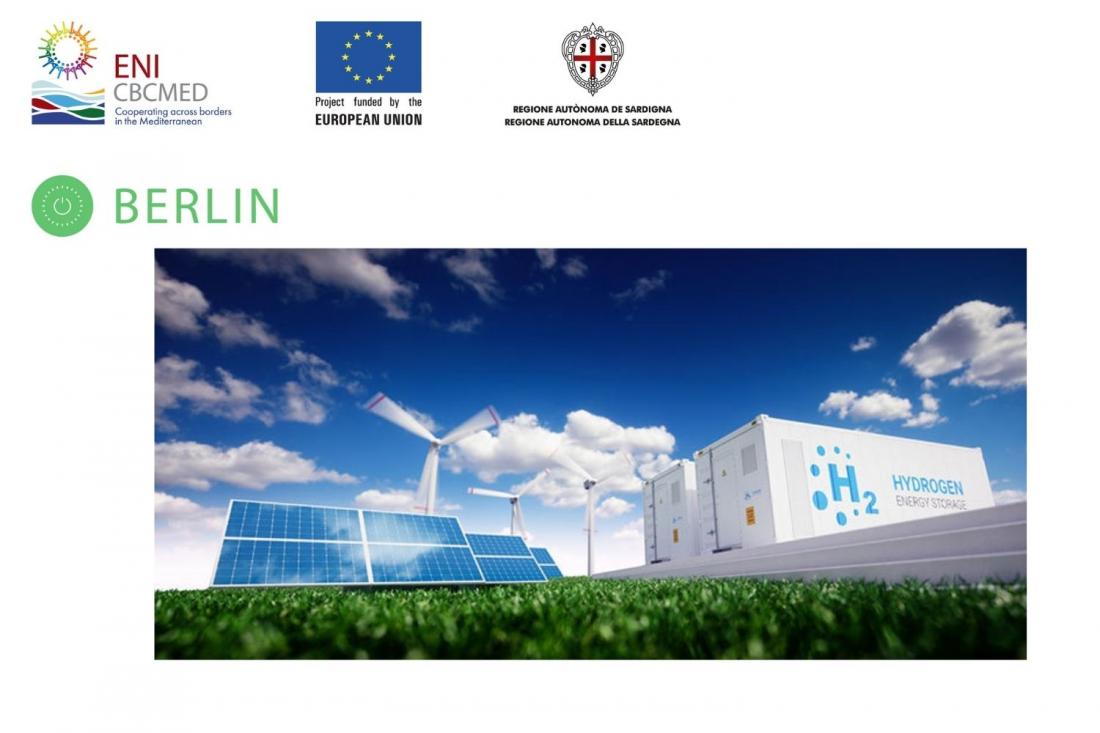BERLIN sets the basis for future developments on hybrid Photovoltaic-based microgrids with green hydrogen

Renewable Energy Sources (RES) are leading the way of the transition from conventional fossil fuelled-oriented power generation to a cleaner, carbon-free, and sustainable world. A form of RES that is abundant in the Mediterranean area is solar energy. It provides a very promising potential for reaching decarbonization through the utilization of solar Photovoltaic (PV) technology. However, the intermittent nature of RES creates additional challenges for the further penetration and the achievement of the long-term goals. One possible solution to alleviate this problem, is energy storage coupled with microgrids.
A microgrid (or a nanogrid, which is a smaller scale microgrid) is a flexible, decentralized power grid which can operate both in complete autonomy (‘island mode’) but can also remain connected to a central power grid, as dictated by technical and economic factors. The microgrid can combine various local electricity sources (e.g., PVs), energy storage technologies (e.g., batteries), and energy management strategies to efficiently satisfy onsite energy consumption loads.
In particular, Energy storage can provide important benefits to a microgrid, since energy can be stored for later use, when for example the PV system is not generating electricity (e.g., during night-time). It can therefore maximize the share of RES and increase the self-sufficiency of the overall microgrid system. There are several types of energy storage technologies; the most developed, simplest, and most practical one is battery energy storage.
It is with the above in mind that the BERLIN project was developed. The BERLIN project focuses on increasing grid penetration by combining three key aspects, namely: PVs, Battery Energy Storage Systems (BESS) and Demand-Side Management (DSM). The goal of the project is to reach high levels of self-resilience in public buildings and to make them greener, smarter, more innovative, and sustainable. The project implements six pilot actions which bring effectively together PVs, BESS, smart grid elements, home automation, etc. to achieve a self-sufficient microgrid.
A hybrid PV-based microgrid with green hydrogen
In the future, the PV-BESS-DSM microgrid systems, developed in the context of the BERLIN pilots, could be further integrated with additional energy storage options, especially if long-term energy storage capabilities will be desired. Although the BERLIN project focuses only on battery storage, an emerging technology that can potentially provide an even more sustainable solution to the energy storage problem and the intermittent nature of RES is green hydrogen.
Green hydrogen utilizes water which comes in abundant quantities, in comparison to Lithium-Ion Batteries (LIB) where lithium availability is insufficient to cover all future energy storage needs. Also, batteries are not environmentally friendly because they generate significant carbon emissions during their manufacturing process; and as they corrode, their chemicals soak into soil and contaminate groundwater and surface water.
A hybrid PV-based microgrid with green hydrogen can add value in terms of self-sufficiency for an autonomous, or a grid-connected configuration, since it can minimize, or even eliminate, the electrical energy imports/exports with the central power grid. Hybrid PV-based microgrid systems with green hydrogen can further increase the RES share and help transform the future energy infrastructure to a completely sustainable path.
A schematic configuration of the BERLIN pilot at the University of Cyprus with the proposed addition of a Green Hydrogen Subsystem is given in Figure 1. The energy storage under the context of the BERLIN project includes a BESS, which provides energy storage to the PV-powered microgrid. When power generation exceeds consumption, energy is stored in the BESS and can be used during time periods where power generation from the PV Subsystem is insufficient, or unavailable. The proposed Green Hydrogen Subsystem (shown in a green rectangle) could be placed adjacent to the components of the existing location. It will include three main components: the Electrolyzer, which will be used to generate hydrogen from excess PV-generated electricity; the Hydrogen Storage Unit (HSU), which will be used to store the generated hydrogen; and the Fuel Cell, which will be used to re-generate electricity by utilizing the stored hydrogen.

Figure 1 Schematic configuration of the BERLIN pilot at the University of Cyprus with the proposed addition of a Green Hydrogen Subsystem (shown in a green rectangle).
Status and future of hybrid PV-based microgrids with green hydrogen
In the future, microgrid systems could be further integrated with green hydrogen generation-storage-and-utilization units, that will offer additional critical capabilities, which will help us achieve our long-term goals, namely: longer-term storage with negligible power losses, larger scale utilization, fuelling of Hydrogen Electric Vehicles (HEV), compact and light energy storage solutions (owing to the high energy density of hydrogen), transportation/distribution of RES energy in the form of green hydrogen (e.g., Vehicle-to-Grid).
The BERLIN project is a good starting point and can be used as the basis for extra developments in the future. These could include the integration of a green hydrogen subsystem, which will be an important part of the microgrid, and it will use abundant materials, without causing a significant environmental footprint. The integration of RES technologies with the coupling of energy storage and new concepts, such as microgrids, will help in the achievement of our decarbonisation goals. Moreover, microgrids coupled with green hydrogen could become a very promising candidate for the further expansion of such concepts/technologies.









